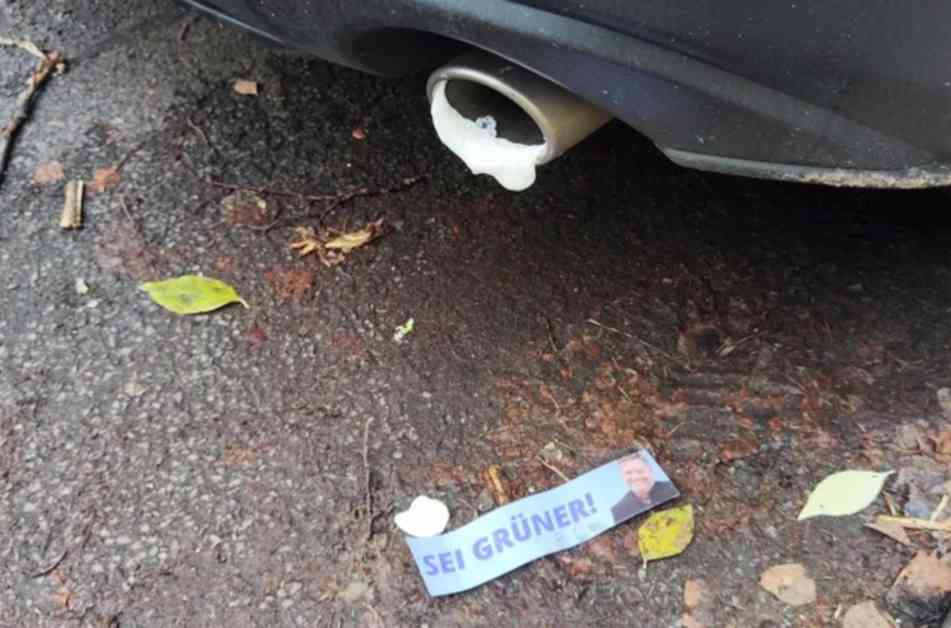In a recent series of events that have shaken Germany, a sophisticated Russian disinformation campaign has come to light, targeting the Green Party and Federal Minister of Economics Robert Habeck. Over 270 vehicles across Berlin, Brandenburg, Bavaria, and Baden-Württemberg were vandalized in a calculated effort to incite public sentiment against the prominent political figure and his party.
The scheme, initially believed to be the work of radical environmental activists, involved sabotaging vehicles by filling their exhaust pipes with construction foam and placing stickers bearing Habeck’s image with the slogan “Be greener!” on the targeted cars. What seemed like a localized act of vandalism took a dark turn when German security authorities uncovered evidence suggesting that the perpetrators were not environmental activists but rather individuals recruited by Russian operatives through online messaging platforms.
This operation is just one piece of a larger puzzle orchestrated by the Russian FSB, focusing on the recruitment of “low-level agents” or “one-off agents” to carry out disruptive activities. Similar tactics have been observed in Ukraine, where young, unemployed individuals were manipulated into destructive acts, ultimately leading to their own demise. The cost of easy money, it seems, comes at a high price.
### Unraveling the Scheme: How It Was Discovered
The covert operation began to unravel when a routine police patrol in Schönefeld, Brandenburg, stumbled upon a suspicious van in the early hours of December 11, 2024. Three young men, aged 17, 18, and 20, were found in the vehicle, carrying an unusual amount of construction foam. Despite being initially released, a subsequent inspection revealed that 43 vehicles in the Alt-Schönefeld area had been tampered with, all exhibiting signs of the same vandalism.
The aftermath of these acts of sabotage achieved its intended effect, sparking widespread outrage and misinformation among the public. Initial reports attributed the attacks to climate radicals, causing a surge of anger towards Habeck and the Green Party on social media platforms, especially Facebook. It was a textbook example of how disinformation campaigns can sow seeds of discord and manipulate public opinion.
### Foreign Interference Unveiled: The Larger Picture
The incident in Germany is not an isolated case but part of a broader trend of foreign interference in democratic processes across Europe. The Federal Office for the Protection of the Constitution had previously sounded the alarm about potential meddling in the Bundestag election campaign, with Russia identified as a key player seeking to influence the outcome in its favor.
Investigations into the vandalism scheme have revealed a complex web of recruitment tactics, with one suspect confessing to being contacted by a Russian individual via Viber. Detailed instructions were provided, along with promises of substantial financial rewards and assurances that legal consequences would be mitigated if caught. This modus operandi mirrors similar operations in Paris and elsewhere in Europe, indicating a coordinated effort to manipulate public sentiment.
As the Ulm prosecutor’s office continues its probe into the matter, the gravity of these events underscores the evolving strategies used to sway public opinion during critical junctures like elections. The sophistication and scale of these disinformation campaigns serve as a stark reminder of the challenges posed by foreign interference in democratic processes.
The intricacies of this disinformation campaign serve as a cautionary tale, highlighting the need for vigilance and resilience in the face of external threats to democracy. As the investigation unfolds, the true extent of the operation and its implications for the democratic process will become clearer.

















